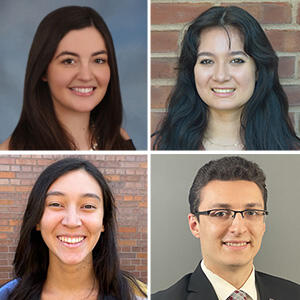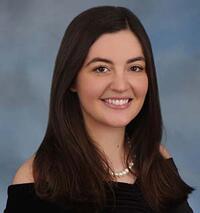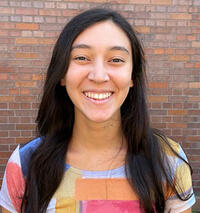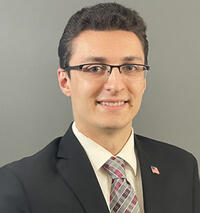
Four Yale chemists were chosen for the National Science Foundation (NSF)’s Graduate Research Fellowship Program for their promise as lifelong leaders of science innovation and teaching.
This year’s Yale Chemistry NSF Fellows are graduate students Marisa Barilla (Davis Lab), Hannah Castillo (Davis Lab), and Anthony M. Smaldone (Batista Lab) and undergraduate student Carmelita J. Ro-Mendez (Holland Group).
As part of their package, the fellows receive significant financial support for three years, including an annual stipend of $37,000, an educational allowance of $16,000, and professional development opportunities. This support affords them the freedom to explore creative research ideas beyond what is offered through their PI’s grants.
To secure the highly sought-after fellowship, each applicant submitted a compelling research proposal along with a personal statement of their volunteerism, teaching, outreach, and accomplishments.
The following Chemistry graduate students received honorable mentions from the NSF: Erica Bocanegra (Johnson Lab), Teddy Gerard (Holland Group), Ramsey Goodner (Ellman Lab), Wenya Jian (Crawford Lab), Maddie Logelin (Bartholomew Lab), Samantha Magpantay (Mayer Lab), Ella Meyer, Alexandria Palazzo (Herzon Lab), Katheryn Rinaolo (Mayer Lab), Rachel Stein (Hammes-Schiffer Group), Matthew Tremblay (Hammes-Schiffer Group), Millan Welman (Hammes-Schiffer Group), and Sadie Wolfarth (Bartholomew Lab).
Meet the NSF Fellows
 |
Marisa Barilla Advisor: Caitlin Davis Research: “Tardigrades, or water bears, are ancient, microscopic animals that are known to be able to withstand extreme conditions, including high and low temperatures, pressure, radiation, osmotic stress, and desiccation. In my work, I employ a variety of biophysical techniques to investigate the protective mechanisms of tardigrade-specific intrinsically disordered proteins (IDPs) that are linked to their desiccation-tolerance. This includes using Fast Relaxation Imaging to probe changes in protein stability and kinetics in the presence of these IDPs in living cells and tardigrades. The outcomes of this work will provide unique insights into how organisms respond and adapt to Earth’s rapidly changing climate.” |
 |
Hannah Castillo Advisor: Caitlin Davis Research: “My research focuses on studying the rates and cellular control of de novo lipogenesis and its related pathways in living systems. Through the use of a super-resolution form of infrared microscopy, optical photothermal infrared micro-spectroscopy (OPTIR) and isotopically labeled vibrational probes, I can visualize DNL both spatially and temporally at the sub-cellular level and investigate how environmental perturbations related to different disease states affect the cell. Investigating such stressors is necessary for understanding lipid dysregulation and will shape future approaches to disease diagnostics and therapies for liver disease.” |
 |
Carmelita J. Ro-Mendez Advisor: Patrick Holland Research: “Drawing inspiration from the iron active sites of nitrogenase enzymes, which naturally reduce dinitrogen to ammonia, we studied iron(II) and iron(III) complexes with SCS-pincer ligands with the goal of binding dinitrogen. These SCS-pincer iron complexes provide a useful synthetic basis upon which to explore the ability of biomimetic sulfide- and carbide-coordinated iron sites to bind dinitrogen. The fundamental understanding of dinitrogen binding to iron will inform the development of greener ammonia-producing catalysts to sustainably meet the global demand for ammonia.” Carmelita recently received the Certificate of Undergraduate Excellence from the Royal Society of Chemistry. She will continue her chemistry studies in the fall as a Ph.D. student at the University of Washington. |
 |
Anthony M. Smaldone Advisor: Victor S. Batista Research: “Artificial intelligence is revolutionizing drug discovery, particularly in accelerating the prediction of toxicity and protein-ligand binding, essential for developing life-saving drugs. As machine learning models evolve, they demand increased computational power. Quantum computing, which leverages properties like superposition and entanglement, offers the potential to simplify these complex problems beyond the reach of traditional computers. My research integrates artificial intelligence with quantum computing to not only reduce computational costs but also to uncover novel insights in these critical areas of chemistry and biophysics. I aim to combine these two emerging computing paradigms to aid in the discovery of groundbreaking drugs that could save countless lives.” |